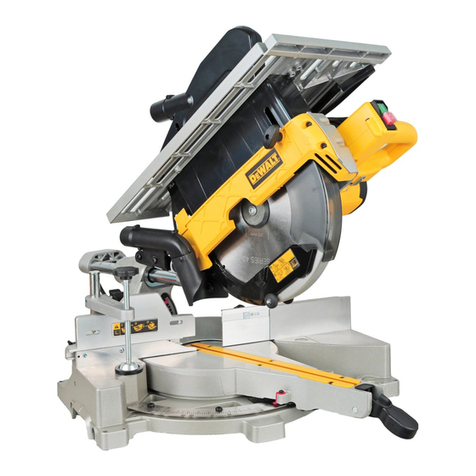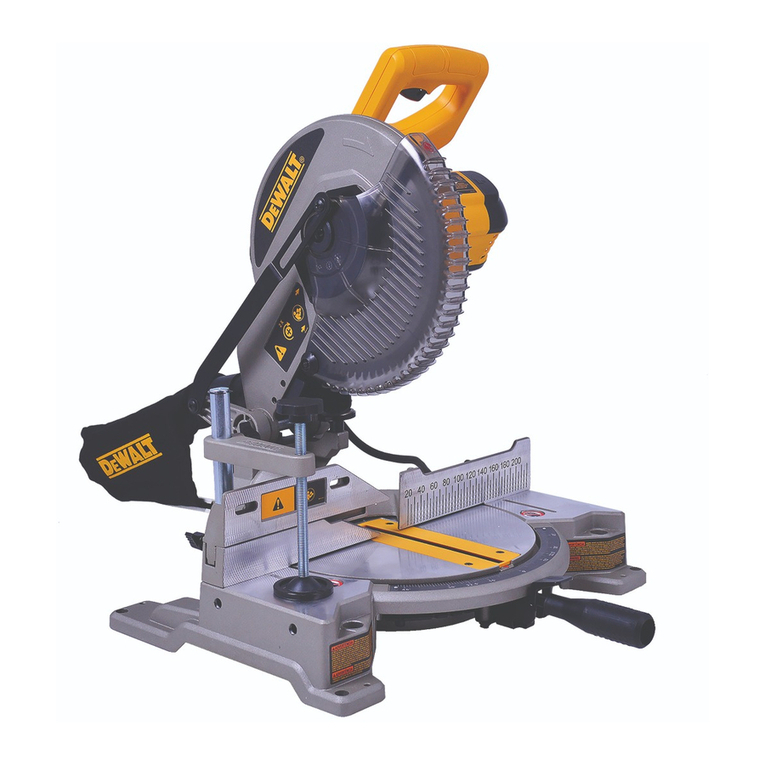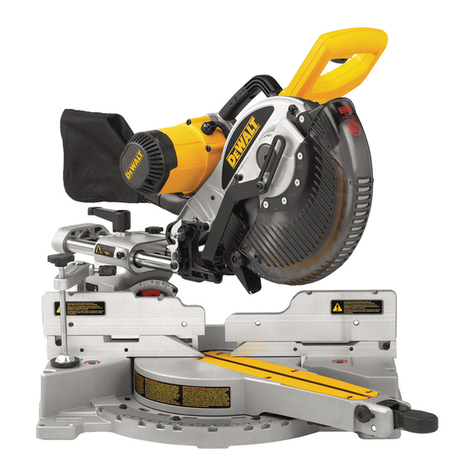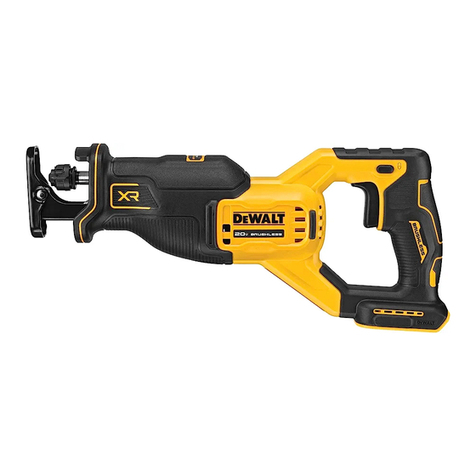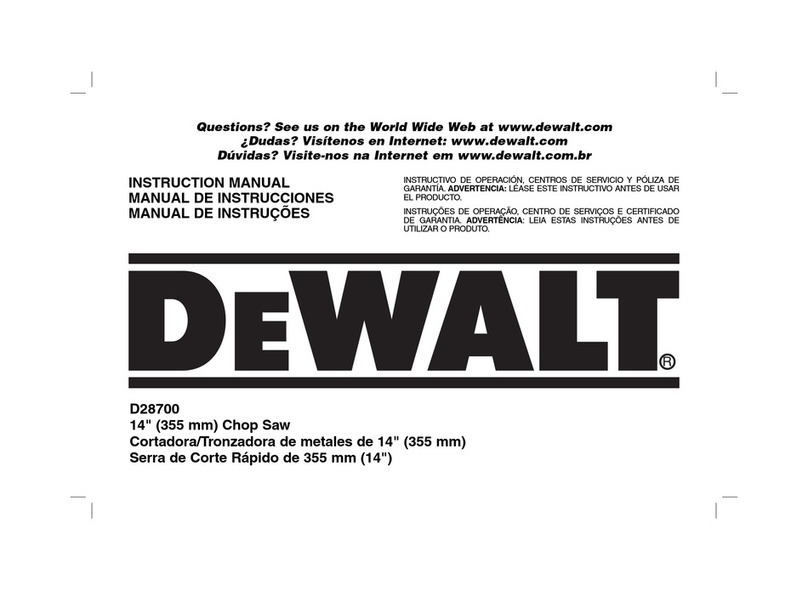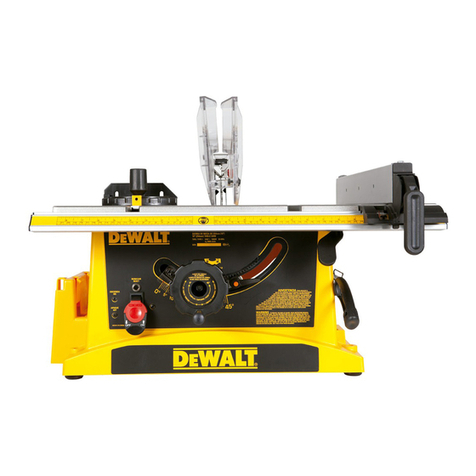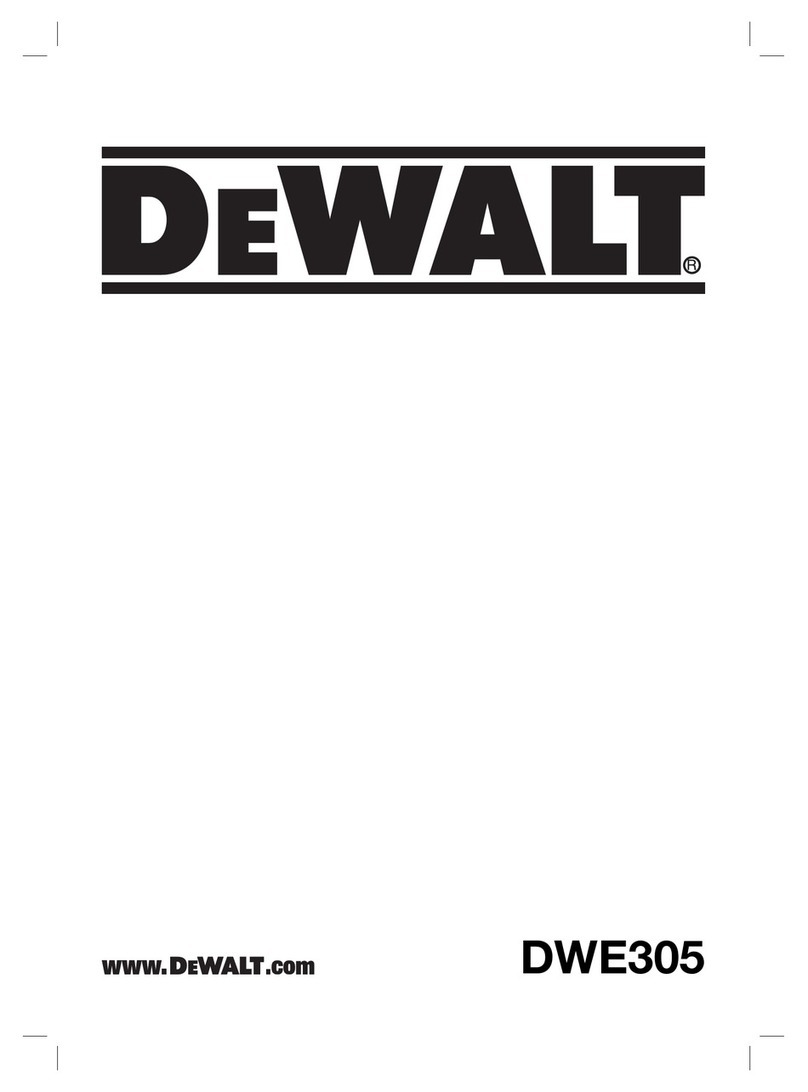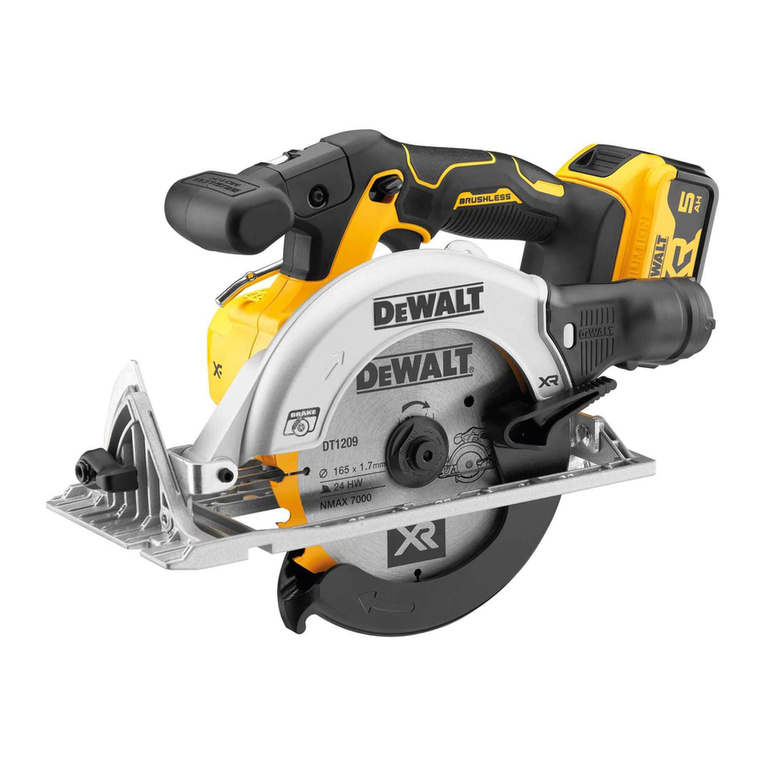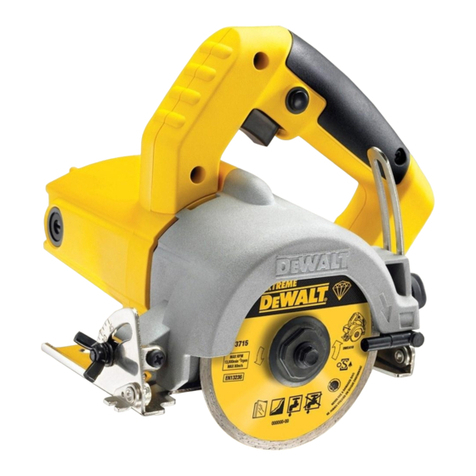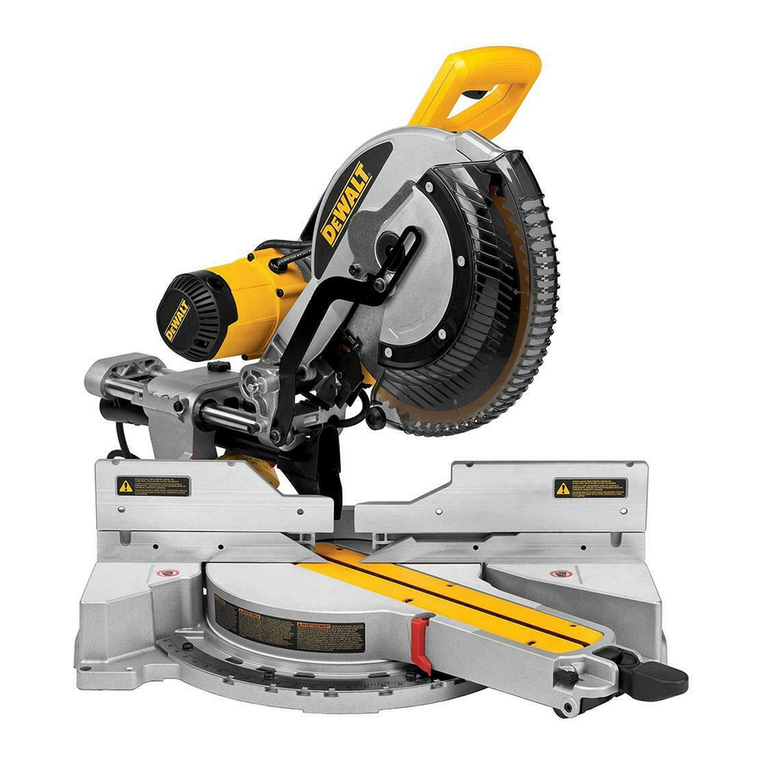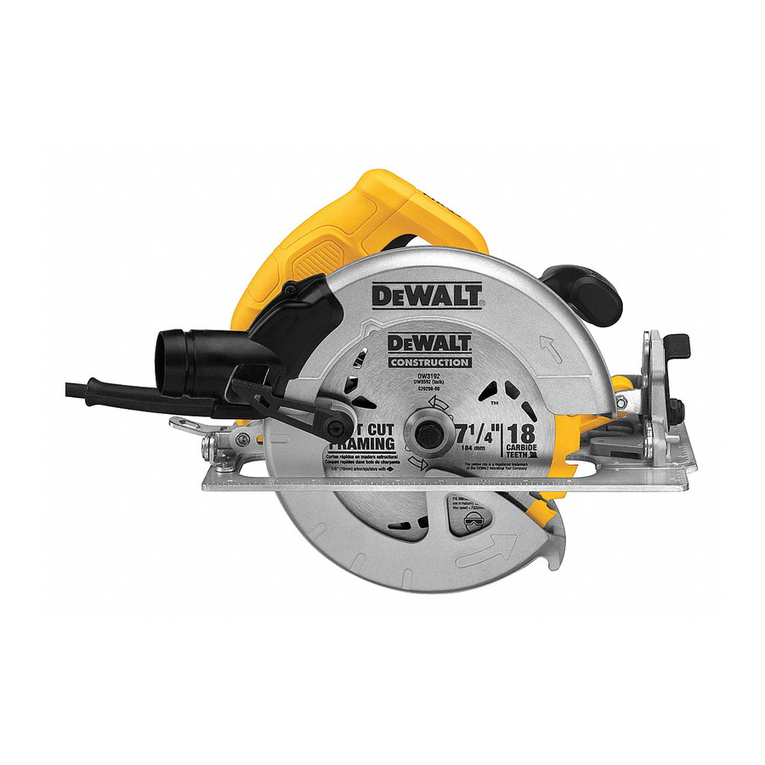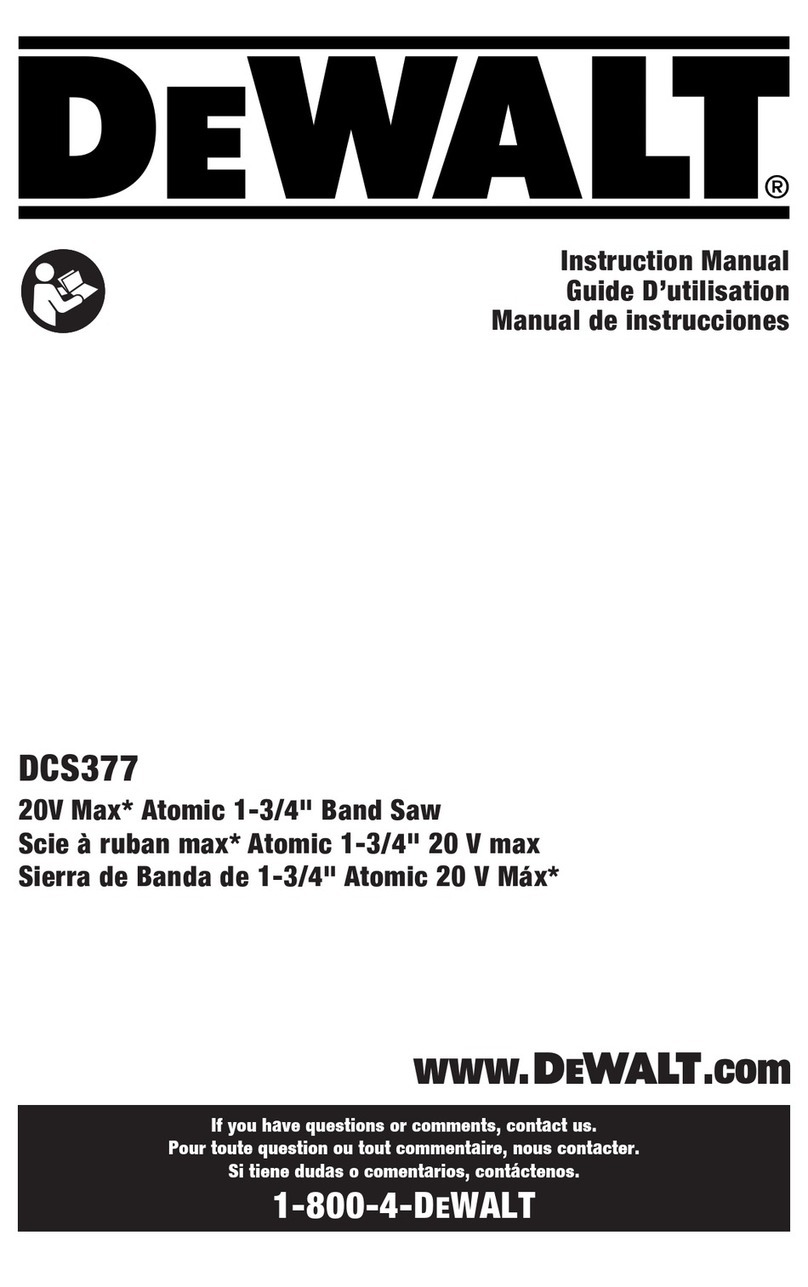4
English
•OBTAIN ADVICE from your supervisor, instructor, or another qualified person if you are not
thoroughly familiar with the operation of this machine. Knowledge is safety.
•ADDITIONAL INFORMATION regarding the safe and proper operation of power tools
(i.e., a safety video) is available from the Power Tool Institute, 1300 Sumner Avenue,
Cleveland, OH 44115-2851 (www.powertoolinstitute.com). Information is also available
from the National Safety Council, 1121 Spring Lake Drive, Itasca, IL 60143-3201. Please
refer to the U.S. Department of Labor OSHA 1910.213 Regulations.
TERMS: THE FOLLOWING TERMS WILL BE USED THROUGHOUT THE MANUAL
AND YOU SHOULD BECOME FAMILIAR WITH THEM.
• Thru sawing refers to any cut that completely cuts through the workpiece.
• Non-thru sawing refers to any cut that does not completely cut through the workpiece.
• Push Stick refers to a wooden or plastic stick, usually homemade, that is used to push
small workpiece through the saw and keeps the operator’s hands clear of the blade.
• Kickback occurs when the saw blade binds in the cut and violently thrusts the workpiece
back toward the operator.
• Freehand refers to cutting without the use of a miter gauge or rip fence or any
other means of guiding or holding the workpiece other than the operator’s hand.
WARNING: Never perform freehand cutting with this saw.
• Plunge cutting refers to cutting where the workpiece is either lowered down onto the
blade with the workpiece controlled by the user's hands or the workpiece is supported
by the user's hands on the table surface and the blade is then raised up through the
workpiece.
WARNING: Never perform plunge cutting with this saw.
• Resawing - Flipping material to make a cut the saw is not capable of making in one pass.
WARNING: Resawing IS NOT recommended.
• Outfeed - the distance behind the saw required to pass the material all the way through
the cut.
SAW BLADE GUARD ASSEMBLY, ANTI-KICKBACK ASSEMBLY AND RIVING KNIFE
Your table saw is equipped with a blade guard assembly, anti-kickback assembly and riving
knife that covers the blade and reduces the possibility of accidental blade contact. The riving
knife is a flat plate that fits into the cut made by the saw blade and effectively fights kickback by
lessening the tendency of the blade to bind in the cut. The blade guard assembly and anti-
kickback assembly can only be used when making thru cuts that sever the wood.
When making rabbets and other cuts that make non-thru cuts, the blade guard
assembly and anti-kickback assembly must be removed and riving knife lowered to
the non through cut position marked on the riving knife. Two anti-kickback pawls are
located on the sides of the riving knife that allow the wood to pass through the blade in the
cutting direction but reduce the possibility of the material being thrown backwards toward the
operator.
Use all components of the guarding system (blade guard assembly, riving knife and
anti-kickback assembly) for every operation for which they can be used including all thru
cutting. If you elect not to use any of these components for a particular application exercise
additional caution regarding control of the workpiece, the use of push sticks, the position of
your hands relative to the blade, the use of safety glasses, the means to avoid kickback and
all other warnings contained in this manual and on the saw itself. Replace the guarding
systems as soon as you return to thru cutting operations. Keep the guard assembly in
working order.
MAKING A PUSH STICK (Inside Back Cover)
• In order to operate your table saw safely, you must use a push stick whenever the size or
shape of the workpiece would cause your hands to be within 6" (152mm) of the saw blade
or other cutter. A push stick is included with this saw.
• No special wood is needed to make additional push sticks as long as it’s sturdy and long
enough. A length of 15.7" (400mm) is recommended with a notch that fits against the
edge of the workpiece to prevent slipping. It’s a good idea to have several push sticks
of the same length [15.7" (400 mm)] with different size notches for different workpiece
thicknesses.
• See the inside back cover for a picture of a push stick. The shape can vary to suit your own
needs as long as it performs its intended function of keeping your hands away from the
blade.
KICKBACKS
Kickbacks can cause serious injury. A kickback occurs when a part of the workpiece binds
between the saw blade and the rip fence, or other fixed object, and rises from the table and is
thrown toward the operator. Kickbacks can be avoided by attention to the following conditions.
How to Avoid Them and Protect Yourself from Possible Injury
a. Be certain that the rip fence is parallel to the saw blade.
b. Do not rip by applying the feed force to the section of the workpiece that will become
the cut-off (free) piece. Feed force when ripping should always be applied between the
saw blade and the fence; use a push stick for narrow work, 6" (152mm) wide or less.
c. Keep saw blade guard assembly, riving knife and anti-kickback assembly in place and
operating properly. If anti-kickback assembly is not operational, return your unit to
the nearest authorized DEWALT service center for repair. The riving knife must be in
alignment with the saw blade and the anti-kickback assembly must stop a kickback
once it has started. Check their action before ripping by pushing the wood under the
anti-kickback assembly. The teeth must prevent the wood from being pulled toward the
front of the saw.
d. Plastic and composite (like laminate flooring) materials may be cut on this saw. However,
since these are usually quite hard and slippery, the anti-kickback pawls may not stop
a kickback. Therefore, be especially attentive to following proper set up and cutting
procedures for ripping.
e. Use saw blade guard assembly, anti-kickback assembly and riving knife for every
operation for which it can be used, including all thru sawing.
f. Push the workpiece past the saw blade prior to release.
g. NEVER rip a workpiece that is twisted or warped, or does not have a straight edge to
guide along the fence.
h. NEVER saw a large workpiece that cannot be controlled.
i. NEVER use the fence as a guide or length stop when crosscutting.
j. NEVER saw a workpiece with loose knots, flaws, nails or other foreign objects.
k. NEVER rip a workpiece shorter than 10" (254mm).
l. NEVER use a dull blade – replace or have resharpened.
WARNING: Some dust created by power sanding, sawing, grinding, drilling, and other
construction activities contains chemicals known to the State of California to cause cancer,
birth defects or other reproductive harm. Some examples of these chemicals are:
• lead from lead-based paints,
• crystalline silica from bricks and cement and other masonry products, and
• arsenic and chromium from chemically-treated lumber.
Your risk from these exposures varies, depending on how often you do this type of work.
To reduce your exposure to these chemicals: work in a well-ventilated area, and work with
approved safety equipment, such as those dust masks that are specially designed to filter out
microscopic particles.
• Avoid prolonged contact with dust from power sanding, sawing, grinding, drilling
and other construction activities. Wear protective clothing and wash exposed
areas with soap and water. Allowing dust to get into your mouth, eyes or lay on the skin
may promote absorption of harmful chemicals.
